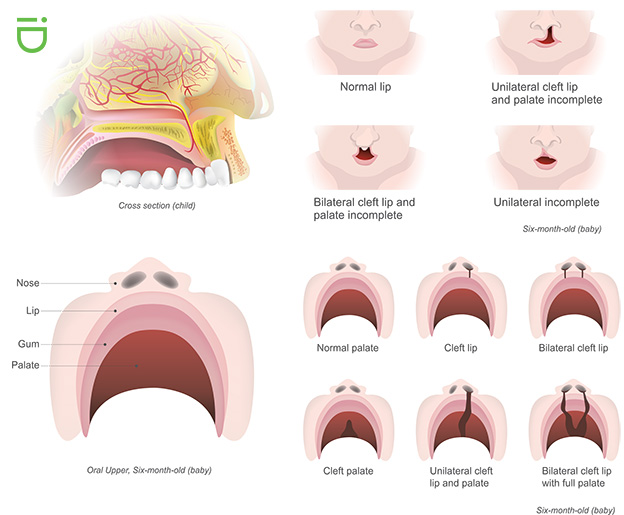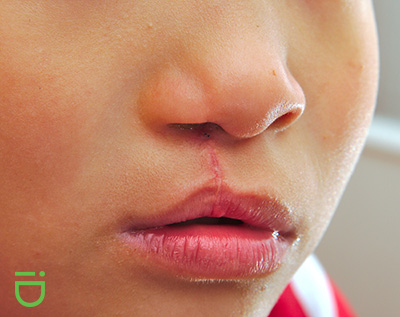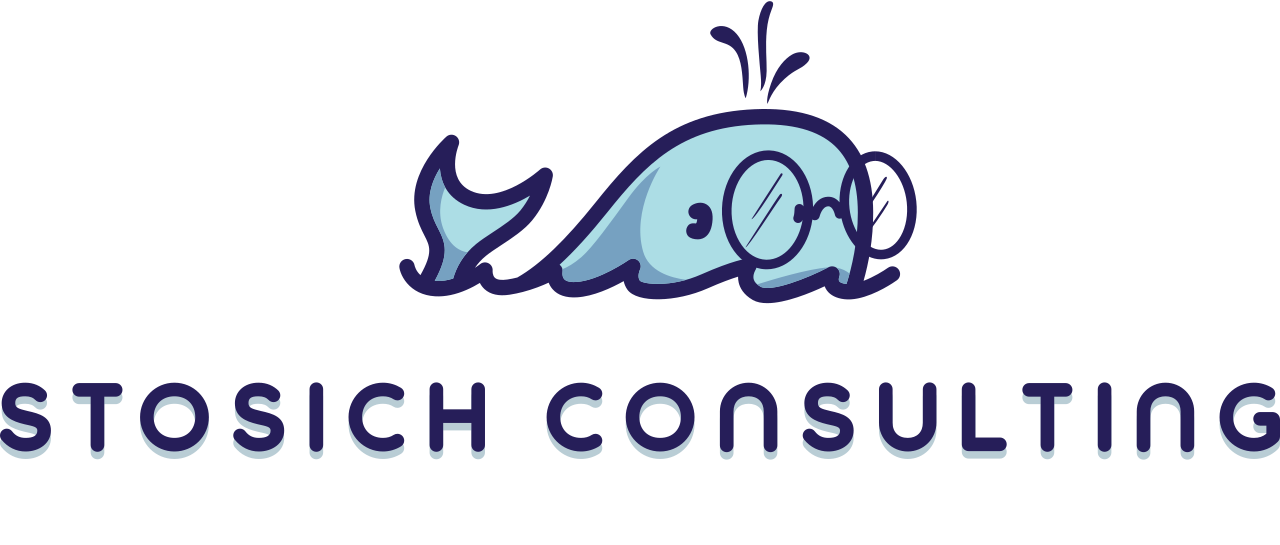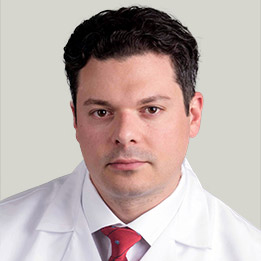What Is Craniofacial Orthodontics and How Does It Help to Treat Cleft Lip and Palate?

The movie “Wonder,” based on a book of the same name, has inspired children and adults every where to look beyond what may lie on the outside to see the beauty of the person within. The movie has touched many, including Dr. Michael Stosich, a Grayslake craniofacial orthodontist expert who has experience working with children born with craniofacial abnormalities like the main character of the movie.
“This movie really hit home for me, because I work with children who are born with facial abnormalities in my capacity as the Director of Orthodontics at the University of Chicago Hospital,” says Dr. Stosich. “Orthodontics can transform smiles, and craniofacial orthodontics can transform lives.”
So, what is craniofacial orthodontics?
Craniofacial orthodontics is a sub-specialty of the orthodontic field that focuses on treatment of patients born with birth defects, most commonly cleft lip and palate. Many craniofacial issues require a coordinated effort from many disciplines to correct, including medical, surgical and dental/orthodontics.
 Dr. Stosich is the cleft lip and palate team orthodontist and the craniofacial orthodontist at the University of Chicago medical center. This requires him to collaborate with a host of other specialists, including those in craniofacial surgery, speech, ENT, neurosurgery, genetics, social work and psychology to ensure total patient centered care. Many patients that Dr. Stosich and the team work with are treated from birth into their late teens.
Dr. Stosich is the cleft lip and palate team orthodontist and the craniofacial orthodontist at the University of Chicago medical center. This requires him to collaborate with a host of other specialists, including those in craniofacial surgery, speech, ENT, neurosurgery, genetics, social work and psychology to ensure total patient centered care. Many patients that Dr. Stosich and the team work with are treated from birth into their late teens.
Additionally, Dr. Stosich works with some of the most talented plastic surgeons on complex orthognathic surgery for adult patients.
“I chose the field of orthodontics because I love being able to not only improve a patient’s oral health through orthodontic treatment, but also their lives,” says Dr. Stosich. “Craniofacial orthodontics has the power to transform a person’s life. But, the greatest joy I get is from the amazing patients I get the opportunity to work with each day. The strength and beauty of each of these patients is found in who they are, and they inspire me every day to continue to pursue excellence in my field.” Let’s take a closer look at what Dr. Stosich treats.
What is cleft lip and palate, and how does it occur?
An orofacial cleft occurs when a baby is born with an opening in the lip or roof of the mouth (also known as the palate). In the beginning of a pregnancy, typically the first six to 10 weeks, the bones and tissues of the upper jaw, nose and mouth fuse together to form the roof of the baby’s mouth as well as the upper lip. But sometimes, these pieces don’t fuse as they should, resulting in an opening. A cleft lip can look like just a small opening at the corner of the lip, or it can extend into the nose and into the gums. Cleft palates vary in size, and can affect either only the soft palate near the back of the throat or could create an opening in the hard palate near the front of the baby’s mouth.

Cleft lip along is more common in boys, cleft palate alone is more common in girls. Cleft lip and palate together is more common in boys. A unilateral cleft is found on only one side of the mouth, while a bilateral cleft is found on both sides.
What are the risk factors/causes of lip and cleft palates?
It may not always be known to the doctor why a cleft occurred, but they are often thought to be a combination of genetic and environmental factors.
If it is hereditary, the gene or genes that cause it can be passed down by either parent. A research team has discovered that a mutation on chromosome nine may be responsible for birth defects, including cleft lip and palate. The gene is known as FOXE1. The exact mutation has not yet been found, but researchers believe there is a variation in the genetic code that contributes to the mutation.
There are some types of medications that, if taken during pregnancy, may increase a woman’s chance of having a baby develop a cleft. Vitamin deficiencies, especially not getting enough folic acid, may also increase the baby’s risk of a cleft. Additionally, exposure to certain chemicals while pregnancy could lead to a cleft.
Smoking, doing drugs and drinking while pregnancy can also lead to an increased risk of birth defects. Women who binge drink during the first weeks of pregnancy have a higher risk of having a baby with a facial defect such as cleft lip or palate.
How are clefts treated?
If your child has a cleft lip or palate, he or she will be treated by a team of doctors. The team typically includes your pediatrician, as well as a plastic surgeon; oral surgeon; ear, nose and throat specialist; orthodontist or craniofacial orthopedic specialist; dentist, and other specialties as needed.
Cleft lip surgery can be performed when a child is three to six months old, but should be performed initially before 12 months of age. The surgeon’s goal will be to both function and appearance. The surgeon will close the separation in the lip by making incisions on both sides of the cleft. This creates flaps of tissue that can then be stitched together to create a more normal looking lip, and allow it to function properly.
Cleft palate surgery should occur before 18 months of age, but typically between nine and 12 months. A surgeon may use different procedures, depending on the type of cleft palate the child presents. The surgeon will make invisions on both sides of the cleft, then work to reposition the tissue and muscles before stitching the incision closed.

Surgery will happen in a hospital under general anesthesia. Surgery can not only improve the appearance, but also the ability to eat, breath and talk normally.
Follow up surgeries may be required to help improve appearance or to improve speech. As your child grows, his or her facial structure will change, so these additional surgeries can help address any issues that may arise.
Additional surgeries can include a pharyngoplasty, which will help improve a child’s speech, as well as alveolar bone grafts. Bone grafts create stability for permanent teeth, and is usually done between the ages of six and 10. The bone graft will close any gaps in the bone or gums near the front teeth, and ensure your child’s permanent teeth can erupt properly.
How early can cleft lip/palate be detected?
For some children, cleft lip and palate may not be detected until birth. However, for some, an ultrasound may show a possible defect. A cleft lip can begin to show in ultrasound around the 13th week of pregnancy, and may become more apparent as the baby grows. If a doctor believes a cleft is there, an amniocentesis test can be done. This tests the amniotic fluid for genetic issues that could cause a defect. However, in many cases, clefts are not detected until birth.
How many children are born with cleft lip and/or palate?
The Center for Disease Control estimates that approximately 2,650 babies are born with cleft palate and 4,440 babies are born with cleft lip (cleft palate may or may not also be present) each year.
How can cleft lip or palate affect a child?
 There are several issues that can arise in a baby or child with a cleft lip or palate. Feeding issues may occur, but feeding strategies, including using bottle with special nipples, can help. If an infant only has a cleft lip, there should be no loss of suction, which means the baby should be able to suck properly from either a bottle or a mother’s breast. However, if there is a gum and lip cleft, feeding may be more challenging.
There are several issues that can arise in a baby or child with a cleft lip or palate. Feeding issues may occur, but feeding strategies, including using bottle with special nipples, can help. If an infant only has a cleft lip, there should be no loss of suction, which means the baby should be able to suck properly from either a bottle or a mother’s breast. However, if there is a gum and lip cleft, feeding may be more challenging.
Breastfeeding with a cleft lip can be successful, but may require the mother to change feeding positions to ensure that any gap is filled with the mother’s breast to ensure proper suction. Breastfeeding a child with a cleft palate will be more challenging, unless the palate is in the back of the mouth and very small. A lactation consultant or cleft nurse specialist can help, but nursing sessions are typically most successful when done in 10 minute sessions. For many infants with cleft palates, a mother may need to pump and bottle feed.
If you choose to bottle feed, you will most likely need specially designed bottles to ensure your infant is getting the proper nutrition. Small, frequent feedings are most effective in the first several weeks. The infant should be held in a more upright position to ensure milk cannot drain into the opening the cleft creates in the nose. The infant’s head, neck and shoulders should be in a straight line. The infant will need to be burped frequently during feedings.
Your child may also require speech therapy to correct difficulties in speaking. In children who only have a cleft lip, speech will generally be typical or close to typical. Cleft palate alone or cleft lip and palate can lead to difficulties with speech. Some children may only need early intervention to monitor and correct any delays, while other children may require speech therapy and/or additional surgeries.
Children may also require orthodontic treatment to adjust their teeth and bites. A cleft can cause some teeth to be displaced, meaning they’ll erupt in the wrong locations. While the orthodontic methods used to treat a child with cleft lip or palate are the same as a child without, a child with a cleft may have other issues present that will require monitoring from an even earlier age. Clefts can lead to missing, malformed, or malpositioned teeth, and will require care by someone well versed in the treatment of clefts.
For some children, the first orthodontic visit may occur before any teeth are even present in the mouth. This will allow the orthodontist to assess the facial growth of the child. As the teeth begin to erupt, the orthodontist can make a plan for the dental and orthodontic needs. Some children may require early interventive treatment to allow for the most effectively functioning bite.
The orthodontist will work in close conjunction with the surgeon to help ensure the best outcome. Together, the orthodontist and surgeon can create proper relationships between the patient’s jaws, ensuring a beautiful and properly functioning bite.
Children with cleft palates are also at an increased risk for ear infections than children without. The eustachian tube allows the fluid inside the near to drain into the back of the nose. But because children with cleft palate have muscles and tendons in abnormal positions, the tube cannot drain the ear properly. If fluid builds up, it can negatively affect the hearing and can increase a child’s risk of ear infections. Children with cleft palates should have regular hearing checks, and ear tubes may be recommended.
Psychologists may also be part of a child’s cleft team to help the child deal with the emotions and stress they may experience due to continued medical procedures or other issues.
Can cleft lip or palate be prevented?
Genetic mutations that can cause clefts cannot be prevented. However, pregnant women can take some precautions to try to eliminate environmental exposure that may lead to clefts. Eat a balanced diet and ensure you are getting proper vitamin intake (especially folic acid). Do not take medications without first getting approval from your doctor, do not smoke, do not do illegal drugs, avoid contact with anyone who has an infectious disease.
Is cleft lip or palate treatment covered by insurance?
 Many parents who have sought treatment for their children discover that insurance may deny treatment, at least in the beginning. Many insurances attempt to classify treatment as plastic or reconstructive surgery. However, many of the treatments associated with a cleft lip or palate should be covered by insurance. To determine what your insurance will cover, it is important to examine your specific policy. Ask your insurance provider for the Evidence of Coverage documents. Within this will also be exclusions, which are the things your insurance is not required to cover. Cosmetic procedures may be included in this, so procedures your child needs may be denied initially. It is important for you to understand why these procedures are medically necessary so that you can appeal any denials that you believe should in fact be covered. Your medical team will also have staff available who are well versed in insurance coverage and who can help you get the most out of your insurance.
Many parents who have sought treatment for their children discover that insurance may deny treatment, at least in the beginning. Many insurances attempt to classify treatment as plastic or reconstructive surgery. However, many of the treatments associated with a cleft lip or palate should be covered by insurance. To determine what your insurance will cover, it is important to examine your specific policy. Ask your insurance provider for the Evidence of Coverage documents. Within this will also be exclusions, which are the things your insurance is not required to cover. Cosmetic procedures may be included in this, so procedures your child needs may be denied initially. It is important for you to understand why these procedures are medically necessary so that you can appeal any denials that you believe should in fact be covered. Your medical team will also have staff available who are well versed in insurance coverage and who can help you get the most out of your insurance.
Cleft lip and palate surgeries can vary in cost from $5,000 to $20,000, depending on the severity, your location, and whether you have insurance or not.
Dr. Stosich and his team at Stosich Consulting work hard every day to ensure a patient-centered approach to treatment. They are dedicated to providing exceptional care to every patient. To learn more about Dr. Stosich and craniofacial orthodontics, call Stosich Consulting today at 847-548-4200.


